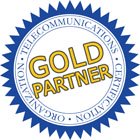Study Guide Notes For This Lesson
These are the words that are displayed and spoken during the lesson. Get these notes for the whole course in the Certification Study Guide, available in print or eBook. Many people tell us a printed companion book enhances their learning!
A router is a device than relays packets from one circuit to another on a first-come, first-served, packet-by-packet basis.
Knowing which circuit to relay the packet to is the routing part of the story, also called packet switching and packet forwarding.
Routers implement bandwidth on demand by not reserving a fraction of the capacity of the connecting circuit for each device (channelizing), but instead giving each device the possibility of using the full capacity of the connecting circuit – when there is something to transmit.
Since devices generate traffic in bursts, and normally have nothing to transmit, many more devices can be connected to the circuit using bandwidth on demand instead of channelizing.
This is called overbooking or oversubscribing. It is done on purpose, to give the users the highest performance for the lowest cost.
In this course, we examine this at the carrier network level: replacing the dedicated lines between customer locations from the simple framework of the previous course with bandwidth on demand service from a carrier between the customer locations.
This brings the same benefit to the customer as it did to individual devices in the previous course: the highest performance for the lowest cost.
All of the carrier’s customers in a city are given access to the same high-speed intercity circuits, with the possibility of transmitting to other cities at full line speed – but only when they have something to transmit.
This is called a packet network service provided by a carrier.
This type of service is used by businesses (including government, organizations and other carriers) to implement cost-effective, flexible, high-speed packet communications between specific locations.
It is, of course, the same story for the packet networks built by carriers and connected to form the Internet.
Overbooking connections between routers implements bandwidth on demand for the users.
In a commercial environment, for banks, government, other carriers, the next questions would be "how MUCH bandwidth on demand" and "how often do we get that"?
This course focuses on the technologies for managing traffic and guaranteeing performance for commercial users on an overbooked network.
After covering the basic architecture, we'll discuss the "guarantee", called a Service Level Agreement, and then the critical ideas of virtual circuits and traffic classes, implemented in the past with ATM and Frame Relay, and most importantly, how MPLS today uses these ideas to implement different service levels, aggregation, integration and convergence.
We'll complete the discussion by understanding what sales people mean when they say "MPLS Service" and compare that to Internet service.














 Different Traffic Classes
Different Traffic Classes